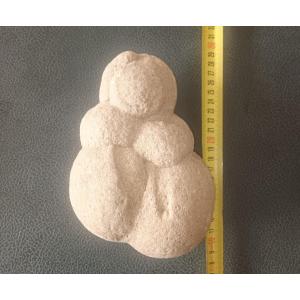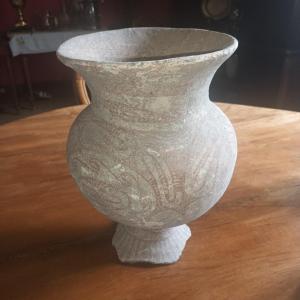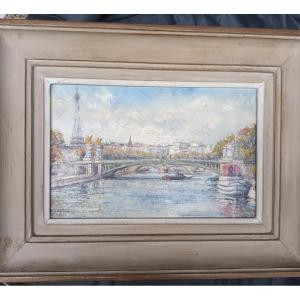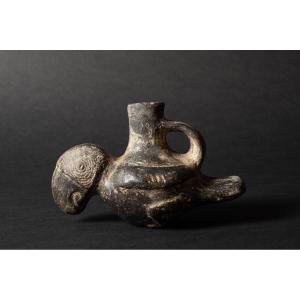Gogottes are beautiful and attractive mineral formations. Once thought to be composed of chalk, they are in fact the rare and entirely natural result of calcium carbonate bonding with extremely fine grains of quartz. Each sculptural layer is a unique composition of mineral-rich waters, with shapes reminiscent of clouds and tangible representations of dreamlike images. The mineralization process takes place over approximately 30 million years, with each formation a unique marvel of form. A typical example of the blending of nature and art, gogottes can be appreciated as sandstone variations of the Gongshi (scholar's rocks) tradition. These sandstone concretions enjoy international popularity and centuries-old fame. From the end of the 17th century, for example, gogottes were praised for their aesthetics by the highest levels of the French nobility. Louis XIV was so enamored of these formations that he ordered extensive excavations around Fontainebleau, in order to decorate the gardens of his palace. Gogottes still adorn L'Enceladus, Les Trois Fontaines and the Salle de Ball at Versailles, and continue to enchant and delight visitors as they have for over 300 years. Perhaps unsurprisingly, gogottes served as inspiration for artists well into the 20th century. Dynamic snapshots of elemental metamorphosis, they were particularly well received by Impressionist and Surrealist sculptors. In particular, Henry Moore's recumbent figures and the white marble compositions of Jean Arp (S'accaupissant, 1960-1962) and Louise Bourgeois (Cumul I, 1969) evoke the striking and unpredictable formations of gogottes.






























 Le Magazine de PROANTIC
Le Magazine de PROANTIC TRÉSORS Magazine
TRÉSORS Magazine Rivista Artiquariato
Rivista Artiquariato